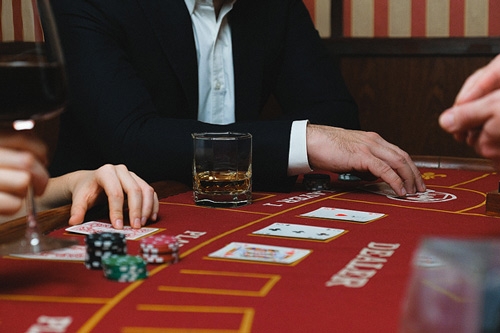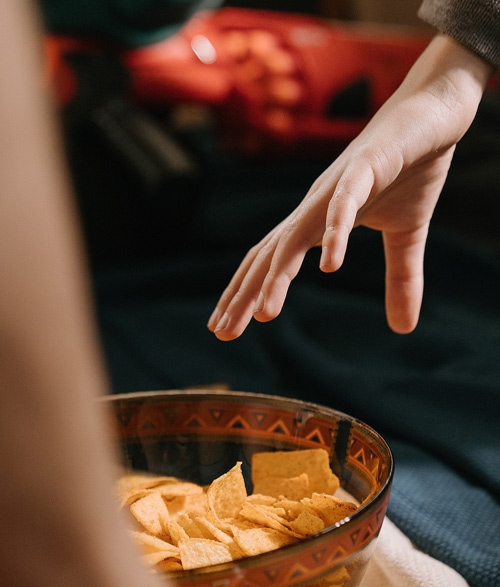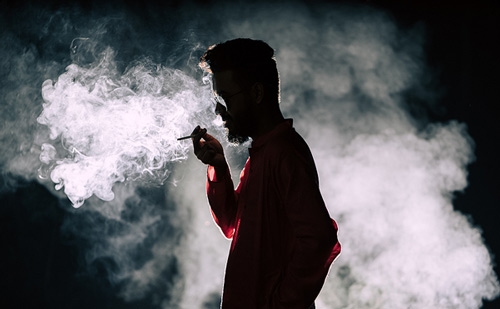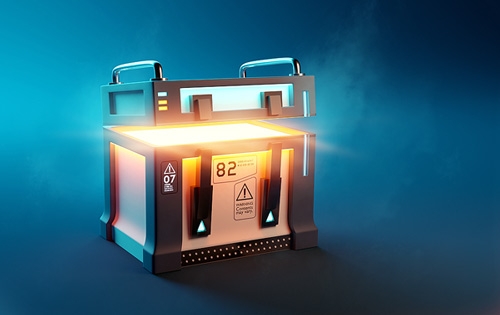
When we think of addictions, we involuntarily think of junkies who can't live without hard drugs. However, addictions are more common than you might think. Drugs, as in mind-altering substances, are definitely not the only things a person can become addicted to. In this article, instead, we'll focus on behaviors that you may display unintentionally. Gambling, gaming, sex, food and social media for example.
Some substances are so normal that we forget that they do affect your body, brain and life. In this blog series, we talk about the drugs we don't normally talk about and share what it's like to stop using these silent addictions for a while.
In this blog series:
- Soft drugs & Hard drugs
- Is Alcohol really that normal?
- Caffeine, the accepted liquid drug
- This is how addiction & Dopamine works
What is an addiction?
The definition of addiction is not set in stone. Some descriptions we find include:
An irresistible need to use substances.
- Addiction Care North Netherlands
Disorders of substance use.
- Jellinek / Diagnostic and Statistical Manual of Mental Disorders
Addiction is a treatable, chronic medical disease involving complex interactions among brain circuits, genetics, the environment, and an individual’s life experiences.
- American Society of Addiction Medicine
So the focus is often on substance abuse. Let's summarize it this way. If you are addicted, you are doing something more often than you would like. When you or those around you are bothered by your repeated actions, it is an indication that you are addicted to something.
The DSM
The Diagnostic and Statistical Manual of Psychiatric Disorders (loosely translated, DSM-V) describes eleven criteria used to determine the level of substance use disorder a person has.
- Use more often and in greater amounts than planned.
- Failed attempts to reduce or stop.
- Use and recovery from use take a long time.
- Strong desire to use.
- Falling short at work, school or home due to use.
- Continuing to use despite bringing problems in the relational area.
- Giving up hobbies, social activities or work due to use.
- Continued use even when it puts you in danger.
- Continued use despite knowing that the use will cause or aggravate physical or psychological problems.
- Needing larger amounts to still feel the effect, known as tolerance.
- The occurrence of withdrawal symptoms, which become less severe by using more of the substance.
- Do you identify yourself with 6 or more criteria, then you have a severe disorder.
- If you meet 4 or 5 criteria, you have a moderate disorder.
- 2 or 3 criteria mean a mild disorder.
Now that we have an understanding of what an addiction is, we can ask other questions. How is it that we become addicted to something that is not in fact an addictive substance in itself? We know that heroin, alcohol and cocaine are addictive substances themselves. But what happens with coffee and acts such as gambling, gaming and scrolling through your Facebook wall?

Then we create an addictive substance ourselves, says Dr. Anna Lembke, psychiatrist and author of Dopamine Nation: Finding Balance in the Age of Indulgence. When you're addicted to something, we like that drug. Whether it's a hard drug or being with a particular person. As long as you don't have this "drug," you feel down. That's because of the substance dopamine.
What is Dopamine?
Dopamine is an important neurotransmitter in your body. In other words, the substance is a messenger of signals between neurons in your brain. Dopamine is known in the media as the addiction hormone because it is said to reward us for things we feel good about, but that is incorrect. Dopamine causes us to move to action to get something in the outside world to come to us. It literally gets us moving to achieve something.

We have dopamine in our brains all the time. The amount just varies. A very simple example. Suppose you are at the bakery and order a loaf of bread. The moment you get your hands on the loaf, dopamine is released in your brain. But also when you can take another hit from that bong after a long day of suffering. And when you're sitting on your butt scrolling through your Instagram feed again.
Dopamine is definitely not an unwanted substance. In fact, when you have more dopamine in your system, you feel better than when you're on dopamine diet. Having less of the substance in your body doesn't feel good. You feel tired, unmotivated and it can lead to feelings of depression. When levels get very low, restless legs, clinical depression and Parkinson's disease can be just around the corner. No fun at all.
What happens when there is an addiction?
The problem with many addictions, however, is not that we have too little dopamine. On the contrary, we get stimulated too often by the very thing we are addicted to. Because we make dopamine more frequently through overstimulation, we become less sensitive to this much-needed neurotransmitter. The dopamine is there, but it hardly has the normal or desired effect.
Addiction makes us less sensitive to dopamine.
All addictions are the same
Nature has not developed thirty different ways to make us addicted to anything. It's only 1. Dopamine therefore plays an important role in addiction, but to say it is an addiction hormone is therefore understating it. Because the system for addiction is the same, it is easier to become addicted to something else once you have experienced what it is like to be addicted.

Gambling, Gaming and Social Media Addiction
If all addictions are the same, is smoking pot frequently the same as gambling regularly? Yes and no. By doing the same thing over and over that gives you a lot of pleasure, you make it give you less pleasure. Therefore, you need more of it to feel good. In that respect, an addiction to pot and gambling are indeed similar. But gambling, social media and gaming do not introduce addictive substances into your body in the way that smoking and snorting do. How addictive an action or drug is depends a bit on you. Your genes largely determine whether you can stop before it becomes problematic. Your environment is also important. If you don't have hobbies, interests or friends, the danger of addiction is greater.
Designed to engage
What makes gaming, gambling and social media so shady is that they are specifically designed to get you addicted. The like button and all those numbers on social media, for example, are both a genius invention and the devil. Likes and comments make us constantly engaged with the platform. Even if we don't touch the phone, we still wonder if that post is being liked, shared and commented on. In gambling, all those lights, sounds and just enough reward for wasting your hard-earned pennies are enough not to worry about that. The possibility of winning is more fun than the winning itself. Because let's face it: winning doesn't happen to most people and rarely to some.
Lootboxes
There is also cross-pollination between the aforementioned addictive pursuits. Lootboxes in games have been the topic of conversation for several years. For real money, you could get better or nicer in-game game elements hidden in a kind of virtual treasure chest. Which treasure box you get, and thus what contents, is determined randomly. This looks suspiciously like gambling, however, you often don't have the chance to actually earn real money back. That disappears in the game.
So the issue is not simply in your genes or lack of other things you like to do. Social media, gambling, gaming and porn are all super addictive for a reason that the programmers put in there on purpose.

Trauma
Besides the fact that a little gambling, blowing or drinking is nice, regular addictive acts can be a way of coping with stress. A coping mechanism is what we call it. Acute stress, because you've had a busy day, are moving or changing jobs, is brief. Trauma is an accumulation of stressful moments that have been pushed to the subconscious and that somehow still bother you. Recurring bad dreams or a destructive way of thinking are a possible manifestation of this.
Psychedelics in health care
This brings us to experimental health care, of which we as an online smartshop are very fond. Because it is our job to find out the effects and underlying mechanisms of our products in great detail and to inform you about them professionally, we sometimes come across interesting developments. One of these developments is that psychedelics are now being experimented with in clinical trials in order to get rid of addictions and traumas. There is a lot to extract from this sentence. What is being done?
Psychedelics
Psychedelics are a separate group of drugs. "Drugs" does not do them justice. We are talking about magic mushrooms, magic truffles, LSD, ayahuasca, DMT and mescaline cacti. Sometimes ketamine and MDMA, the active ingredient in Ecstasy, are mentioned in the same breath. However, the effects of the two are completely different. Because you quickly build up a strong physical and mental tolerance for them, psychedelics are barely addictive. Quite the contrary. If you've ever had a big trip, the last thing you want is to experience it again the next day.
Clinical Trials
Those psychedelics have a special quality. They break repetitive thought patterns and turn off the filter in your brain. That combination makes you open to new ways of thinking. Without intention or guidance, that can become an unguided missile; especially in an improper setting. When a trained psychiatrist and an experienced tripsitter are sitting next to you, the combination suddenly becomes very powerful.
Experiments
At the time of writing, trials of this type of mental health care are now being run in several countries. It involves people who have deep-seated traumas or destructive addictions that are already under treatment. Think about post-traumatic stress, addiction to opiates, smoking and depression. They are offered a helping hand by medical professionals to participate in such an experiment. Often pure psilocybin is used, because it is easy to measure and above all easy to dose.

A session looks like this. As a patient you will enter a short treatment program together with a psychiatrist and a researcher (professional tripsitter). It consists of an intake, the treatment and one or more integration sessions. During the intake you discuss what the problem is, how the drug works and what it could do for you. You also get familiar with the confronting characteristics of such a session. The dosages are not bad. The amount of psilocybin is rather mysterious, but researchers such as Dr. Charles Grob say that the doses are considerable. That can lead to a bad trip. So it's not always fun. And it's meant to be. After all, in those confrontational moments there may be a solution. Trauma is open and exposed, while it is normally buried deep in your subconscious, something that no psychologist can access. It is therefore up to the therapists to offer the patient the best possible support and to guide them towards a solution.
The integration conversations are intended for exactly that purpose. The patient is then no longer under the influence, but together with the supervisors tries to understand what has been shown during the psychedelic trip.
They are still experiments. Who knows, maybe one day it will become normal to use psilocybin in health care, but for now it looks like it will take years at least.
Addictions and Traumas
There is hope that psychedelics can help here under competent supervision. There are stories of success, for example, that after only one or two such guided experiences people have stopped smoking or are much more positive about their lives.
Perhaps an important lesson lies here. By exposing the underlying trauma to people who can help you, the cause of your addiction becomes visible and treatable. Some people are more susceptible to addiction than others. Could past experiences be at the root of that?

Conclusion
In this blog series, we have seen a handful of addictive substances that we often overlook. There are also probably substances that we have forgotten or left out on purpose. After all, there are a lot of things you can get addicted to. Opiates and painkillers in general are a worldwide problem. Tobacco is a separate story because a global movement after decades of promotion is now trying to get people to quit cigarettes.
If you have a store that sells smart drugs, you have to deal with addiction. Just because you have to find out if the drug you sell has addictive properties. For that reason, we want to teach you through these blogs that an addiction is not something you should be ashamed of. Whether that's an addiction to something as socially accepted as coffee or Facebook or as taboo as cocaine or sex. There is something to be done about it. You may not admit it, but your cravings may be a coping mechanism for some other problem. Do you recognize something in this, or are you worried after reading these blogs? Please talk about it with someone who is qualified to do so. Below are some links that may be a first step.
Help with Addiction
Netherlands
Belgium
Germany
France
Sources
- Lembke, A, Huberman, A. “Dr. Anna Lembke: Understanding & Treating Addiction“. The Huberman Lab Podcast #33.
- Huberman, A. “How to Increase Motivation & Drive“. The Huberman Lab Podcast #12.
- Curtis, V, et al. “The Social Dilemma” Netflix, 2020.
- Jellinek